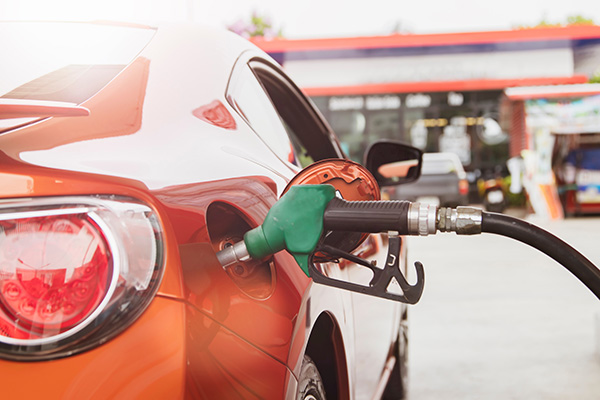
Have you ever wondered how a gas pump knows exactly when to stop filling your tank? You hold the nozzle, the gas flows, and just when the tank reaches capacity, the pump shuts off—without spilling a drop. It seems automatic, but there’s actually a clever mechanical system at work inside the fuel nozzle.
While many assume this process relies on sensors in the car or an electronic connection between the gas pump and the fuel tank, the reality is much simpler. Gas station pumps use a vacuum-based system built into the nozzle itself, allowing them to detect when your tank is full.
The Simple Mechanism Behind Automatic Shut-Off
At the tip of every gas pump nozzle, there’s a small hole connected to a tube inside the handle. While fuel is flowing, air continuously moves through this hole, creating a vacuum effect inside the nozzle’s venturi tube.
As long as air is flowing freely, fuel continues to pump. But once the gas level in your tank rises high enough to cover the hole at the tip of the nozzle, air can no longer escape. This change in air pressure collapses the vacuum, triggering the shut-off valve inside the pump. The result? Fuel flow stops instantly, preventing spills or overflows.
Why Do Gas Pumps Need to Shut Off
This shut-off system is entirely mechanical, meaning there are no electronic sensors communicating with your vehicle. Instead, it relies on basic physics and fluid dynamics. The gas station pump does not “know” how much fuel your car needs—it simply stops fueling the moment liquid blocks the vacuum hole.
This makes the system highly reliable since it doesn’t depend on electrical signals or car-specific programming. Whether you're driving a compact sedan, a large SUV, or a pickup truck, the pump works the same way every time.
Why “Topping Off” Your Tank is a Bad Idea
Many drivers try to squeeze in a little extra gas after the pump clicks off, thinking they can fit just a bit more into the tank. However, this is not recommended for several reasons:
- Overfilling Can Damage the EVAP System – Modern cars have evaporative emissions systems (EVAP) that manage fuel vapors. Extra gas can flood this system, causing performance issues and costly repairs.
- You’re Likely Wasting Money – The pump shuts off at the exact moment your tank reaches full capacity. Adding more fuel won’t give you extra range, but it might spill into the filler neck or evaporate.
- It Can Lead to Spillage – Gasoline expands in warm temperatures. An overfilled tank leaves no room for expansion, increasing the likelihood of leaks, drips, or vapor loss.
What If the Pump Shuts Off Too Soon
In some cases, the fuel nozzle may click off before your tank is actually full, leaving you frustrated at the pump. If this happens frequently, several factors could be at play:
- Fuel splashing back up the filler neck, falsely triggering the shut-off system.
- A clogged vapor return line inside the pump nozzle, interfering with airflow.
- A bent or improperly inserted nozzle, preventing proper vacuum formation.
If the pump stops too early, try adjusting the nozzle angle, inserting it fully, or reducing the fueling speed. Some pumps are more sensitive than others, so switching to a different pump or gas station may resolve the issue.
Keep Your Car’s Fuel System in Good Shape
Knowing how a fuel pump nozzle functions is helpful, but making sure your fuel system stays in top shape is even more important. A well-maintained fuel system keeps your engine running efficiently, improves fuel economy, and helps prevent costly repairs. If you want to avoid clogged injectors, poor acceleration, or rough idling, taking care of your fuel system should be a priority. Here’s what you can do to keep it working properly:
- Replace the fuel filter at recommended intervals to prevent clogs.
- Use high-quality gasoline to minimize carbon buildup.
- Have your fuel injectors cleaned periodically to maintain performance.
- Check for fuel leaks if you notice poor acceleration, a drop in fuel economy, or difficulty starting the car.
Don’t ignore poor fuel efficiency or sluggish acceleration—your fuel system may need attention. Stop by Gil’s Garage for professional maintenance!